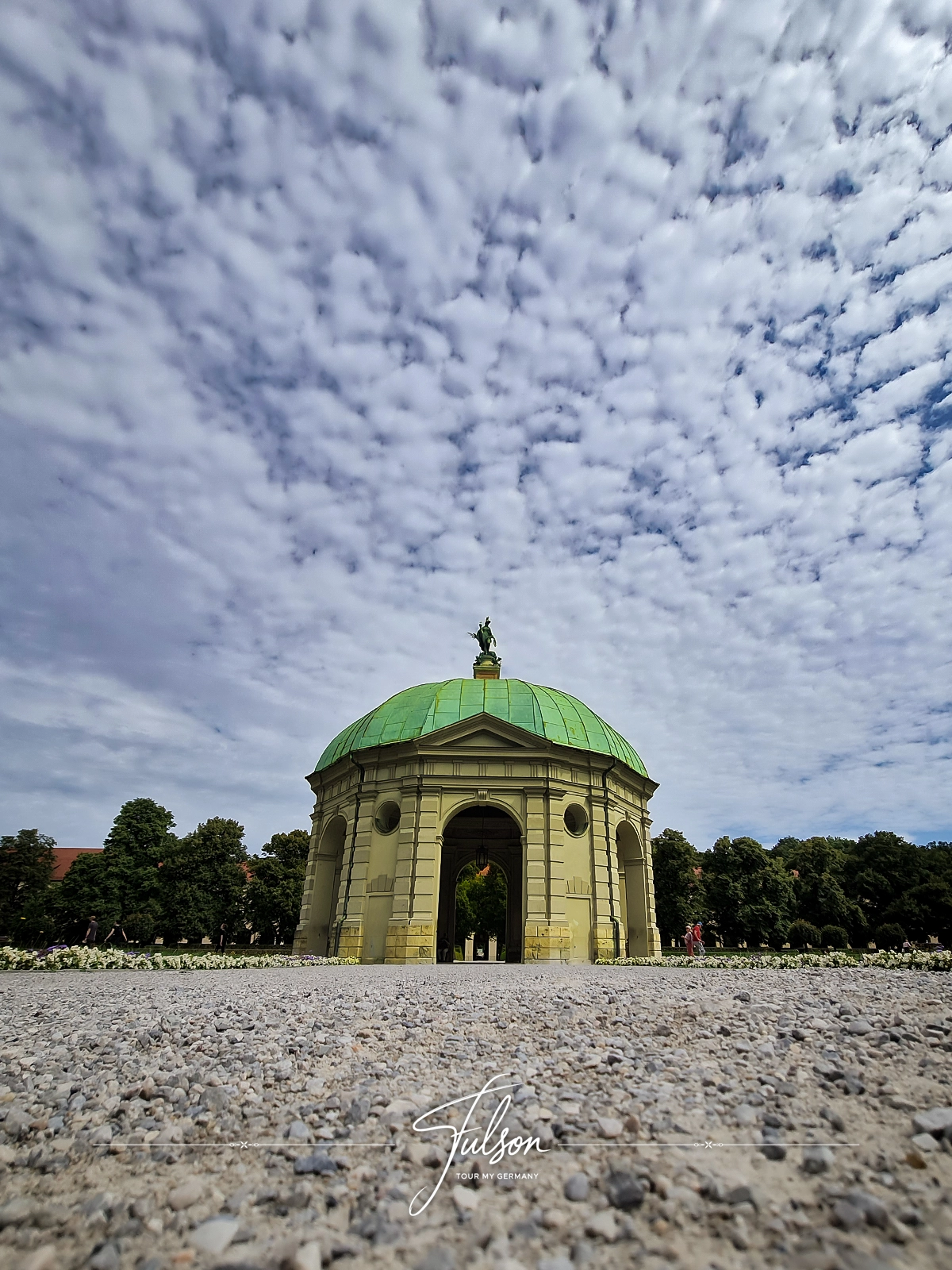- Home
- Top German Cities To Visit
- Munich Photo Gallery
- Diana Temple Munich
Diana Temple, English Garden—Munich’s Hidden Gem
By: Eran Fulson / Traveler & Blogger / After 15+ years of travel across North America and Europe, I now help travelers experience Germany beyond the guidebooks with firsthand tips and cultural insights.
About the Photo
I can't begin to describe just how hot this day was. Maybe it was the sun or the lunchtime beer, but the Diana Temple's shade was a welcome reprieve. Few angles caught the contrast of the pavilion's green copper roof against the unsettled sky. A wider lens would have shown more of the surrounding trees, but this was all that was needed to celebrate the entrance to Munich's English Garden.
The Diana Temple (Dianatempel) was built in the early 17th century and remains one of the most photographed landmarks in the park.
The structure serves as both a historical monument and a vibrant gathering place, often featuring street musicians performing classical or folk music.
Historical Significance
- Built in 1615 by architect Heinrich Schön, commissioned by Maximilian I, Elector of Bavaria.
- Located at the center of the Hofgarten, marking the entrance to the English Garden.
- Features eight symmetrical arches and a statue of Bavaria, symbolizing Bavarian strength and unity.
- Often used as a meeting place for musicians, dancers, and social gatherings.
How to Visit the Diana Temple in the English Garden
- Location: English Garden, Munich (near Odeonsplatz)
- Opening Hours: Open 24/7, free to visit
- Closest Transport: U-Bahn: Odeonsplatz or Universität
- Entry Fee: Free
Tip: Visit in the early morning or late evening for a quiet experience, or in the afternoon to hear street musicians playing under the pavilion.
Want More Peaceful Nature in Munich?
Munich's hidden natural gems offer serene escapes within and around the city. The Isar River's Flaucher area provides peaceful spots for picnics and swimming, while the Eisbachwelle attracts surfers year-round.
Just outside Munich, Roseninsel (Rose Island) in Lake Starnberg offers lush landscapes and historical charm. These tranquil retreats provide a refreshing contrast to urban life and are just a few of the many hidden gems beckoning you in Munich.
What is the Diana Temple in Munich’s English Garden?
What is the Diana Temple in Munich’s English Garden?
The Diana Temple (Dianatempel) is an elegant, circular pavilion in Munich’s English Garden, built in 1615. It serves as both a historical landmark and a popular spot for music performances and gatherings.
Can you go inside the Diana Temple?
Can you go inside the Diana Temple?
Yes! The pavilion is open-air and accessible to visitors. Many people sit, relax, and enjoy music played by street performers under the dome.
Why is the Diana Temple important?
Why is the Diana Temple important?
- It marks the historical transition from the Hofgarten (Royal Garden) to the English Garden.
- The statue on top symbolizes Bavaria and represents the state’s cultural heritage.
- It’s a popular social and cultural hub, often featuring live music.

